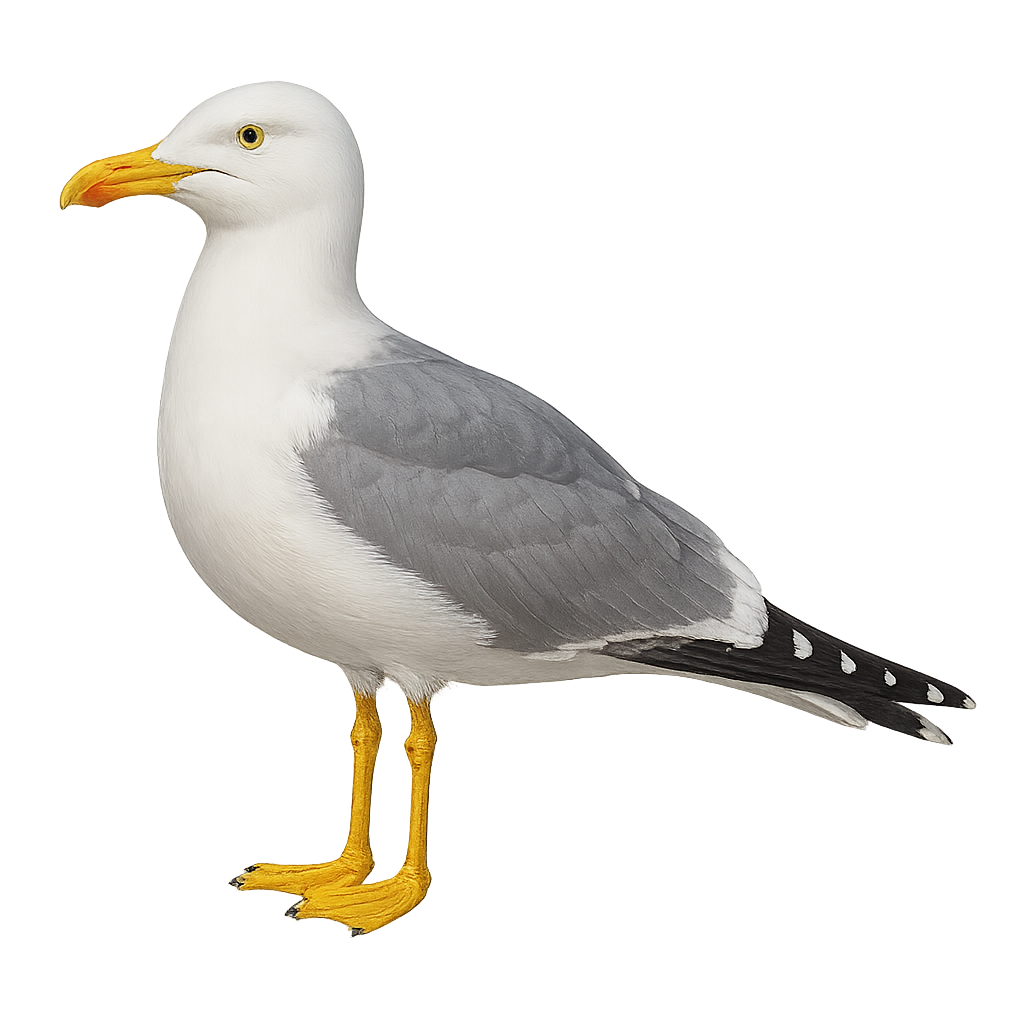Your wildlife photography guide.
Explore the yellow-legged gull in detail, study its behavior, prepare your shots.
Where to observe and photograph the yellow-legged gull in the wild
Learn where and when to spot the yellow-legged gull in the wild, how to identify the species based on distinctive features, and what natural environments it inhabits. The WildlifePhotographer app offers tailored photography tips that reflect the yellow-legged gull’s behavior, helping you capture better wildlife images. Explore the full species profile for key information including description, habitat, active periods, and approach techniques.
Yellow-legged gull
Scientific name: Larus michahellis

IUCN Status: Least Concern
Family: LARIDAE
Group: Birds
Sensitivity to human approach: Suspicious
Minimum approach distance: 10 m
Courtship display: April to May
Incubation: 25-28 jours
Hatchings: April to June
Habitat:
Rocky coasts, cliffs, urban areas
Activity period :
Primarily active during the day, with peak activity in the morning and late afternoon.
Identification and description:
The yellow-legged gull is a large seabird found primarily along the Mediterranean and Atlantic coasts. It is easily recognized by its white plumage, gray wings, and yellow legs. This gull is omnivorous and feeds on fish, marine invertebrates, and food waste, making it an opportunist. It is also known for its nesting behaviors on rocky coastlines and cliffs and can occasionally be seen in urban areas.
Recommended lens:
400 mm – adjust based on distance, desired framing (portrait or habitat), and approach conditions.
Photography tips:
Photograph the yellow-legged gull using a telephoto lens to capture its behavior in flight or while feeding. It is best to photograph early in the morning or late in the afternoon when the light is soft and the bird is more active. Be patient and ready to capture a moment when it is flying near the sea or perched on a rock.
The WildlifePhotographer App is coming soon!
Be the first to explore the best nature spots, track rutting seasons, log your observations, and observe more wildlife.
Already 1 429 wildlife lovers subscribed worldwide

